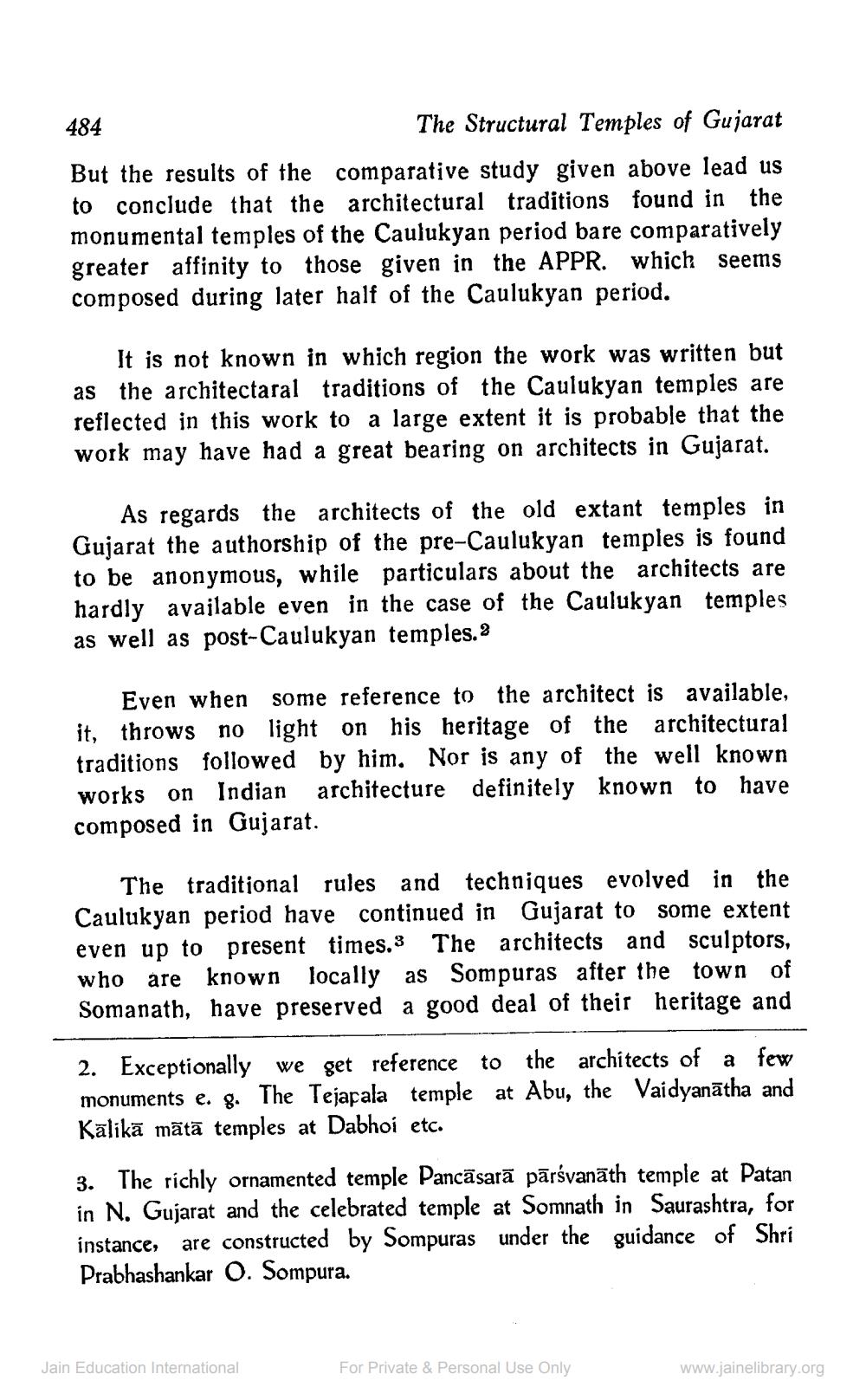________________
484
The Structural Temples of Gujarat But the results of the comparative study given above lead us to conclude that the architectural traditions found in the monumental temples of the Caulukyan period bare comparatively greater affinity to those given in the APPR. which seems composed during later half of the Caulukyan period.
It is not known in which region the work was written but as the architectaral traditions of the Caulukyan temples are reflected in this work to a large extent it is probable that the work may have had a great bearing on architects in Gujarat.
As regards the architects of the old extant temples in Gujarat the authorship of the pre-Caulukyan temples is found to be anonymous, while particulars about the architects are hardly available even in the case of the Caulukyan temples as well as post-Caulukyan temples. 2
Even when some reference to the architect is available, it, throws no light on his heritage of the architectural traditions followed by him. Nor is any of the well known works on Indian architecture definitely known to have composed in Gujarat.
The traditional rules and techniques evolved in the Caulukyan period have continued in Gujarat to some extent even up to present times. The architects and sculptors, who are known locally as Sompuras after the town of Somanath, have preserved a good deal of their heritage and
2. Exceptionally we get reference to the architects of a few monuments e. g. The Tejapala temple at Abu, the Vaidyanātha and Kālikā mātā temples at Dabhoi etc.
3. The richly ornamented temple Pancāsarā pārsvanāth temple at Patan in N. Gujarat and the celebrated temple at Somnath in Saurashtra, for instance, are constructed by Sompuras under the guidance of Shri Prabhashankar O. Sompura.
Jain Education International
For Private & Personal Use Only
www.jainelibrary.org




